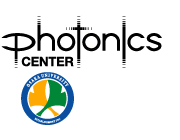【研究成果】2015年
研究成果83
An enzyme-responsive metal-enhanced near-infrared fluorescence sensor based on functionalized gold nanoparticles
Zhanghua Zeng, Shin Mizukami, Katsumasa Fujita and Kazuya Kikuchi
Chem. Sci., 2015, 6, 4934–4939
We developed a novel enzyme-triggered NIR fluorescence enhancement nanosystem, which was obtained by the deliberate design and construction of functionalized AuNPs. The NIR fluorescence on the AuNPs was enhanced by a factor of 7.8 by β-gal. The increase induced by β-gal in electromagnetic resonance coupling between the AuNPs and the fluorophores gave rise to an increase in kr and light scattering intensity, both of which substantially contribute to the fluorescence enhancement. This novel strategy for the design of NIR fluorescent sensors will be widely applicable for the development of various enzyme-detection systems by the introduction of specific substrates on AuNPs. The new NIR fluorescence enhancement principle described here will be useful in the in-demand imaging techniques, such as in vivo enzyme detection and early diagnostic imaging. Although some challenges remain for the in vivo applications, they will be overcome by the integration with some advanced technologies such as stimuli-responsive polymers or active targeting technologies.

Schematic illustration of the enzyme-responsive fluorescence enhancement




